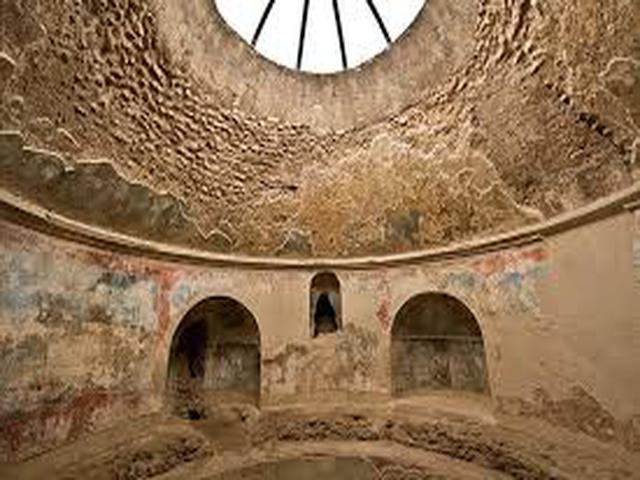central bathrooms

The Central Baths in Pompeii are a fascinating point of interest for tourists exploring the ancient city. Situated at the intersection of Via Stabiana and Via di Nola, these baths offer a glimpse into the daily life and customs of the inhabitants of Pompeii. Built in the aftermath of the AD62 earthquake as part of the city's urban renewal efforts, the design of the Central Baths reflects the contemporary bathroom practices of the time. The architects paid special attention to maximizing natural light and providing ample space for exercise, creating a harmonious blend of functionality and aesthetics.
One striking feature of the Central Baths is the presence of only a single set of bathrooms, hinting at the possibility that they were reserved for men or that women may have had restricted access. The layout of the baths is thoughtfully planned, with entrances on the north, west, and south sides leading to the palaestra, a central courtyard used for exercise and socializing. Service entrances along the east side of the complex facilitated the maintenance and operation of the baths, ensuring a seamless experience for visitors.
Upon entering the baths, visitors would have passed through the vestibule into the apodyterium, a room possibly used for undressing before entering the bathing areas. The south side of the apodyterium opens up to the frigidarium, a rectangular room with a cold bath sink along the east wall. This design deviates from the traditional circular layout of Roman baths, offering a unique architectural perspective on bathing practices in Pompeii.
From the frigidarium, doors lead to the tepidarium and caldarium, both featuring large windows overlooking the palaestra. The tepidarium served as a warm room for relaxation, while the caldarium housed a hot bath for therapeutic purposes. Adjacent to the caldarium is the laconicum, a room with intense dry heat designed to promote sweating and detoxification. The intricate design and thoughtful layout of the Central Baths showcase the advanced engineering and architectural skills of the ancient Romans.
Overall, the Central Baths in Pompeii provide a fascinating insight into the daily routines and social customs of the ancient city's residents. Visitors can explore the various rooms and spaces within the baths, imagining themselves stepping back in time to experience the luxurious amenities and communal activities that were an integral part of Roman life. Whether marveling at the innovative design of the frigidarium or relaxing in the heat of the laconicum, a visit to the Central Baths is sure to leave a lasting impression on anyone interested in the history and culture of Pompeii.
© ChatGPT 3.5